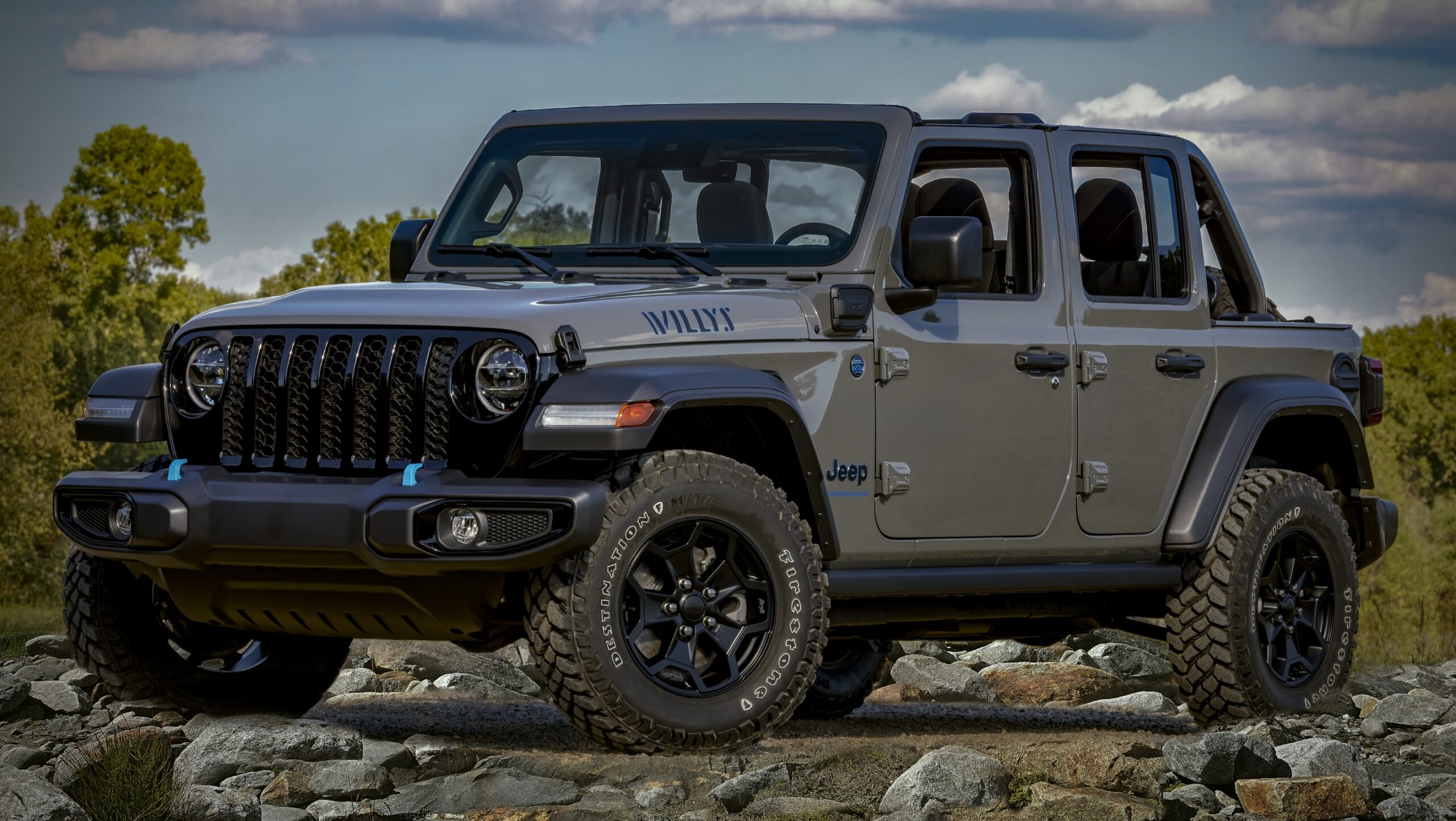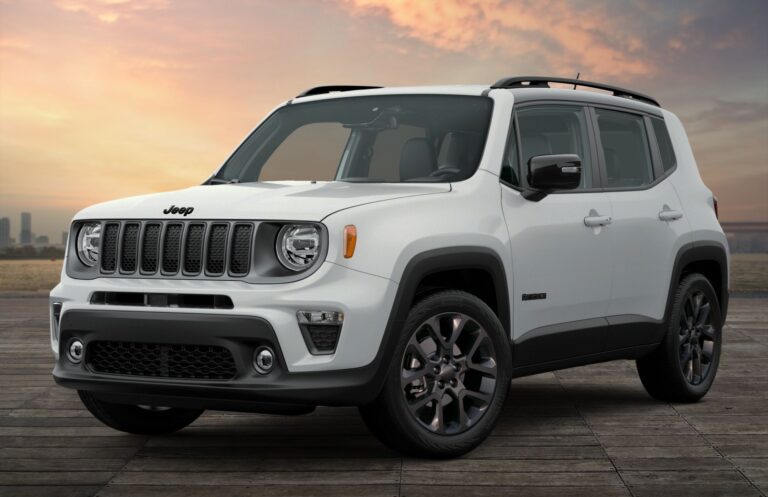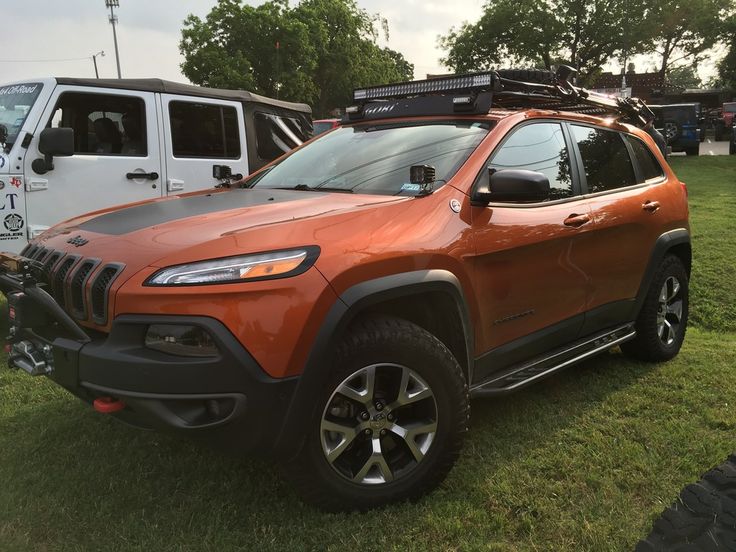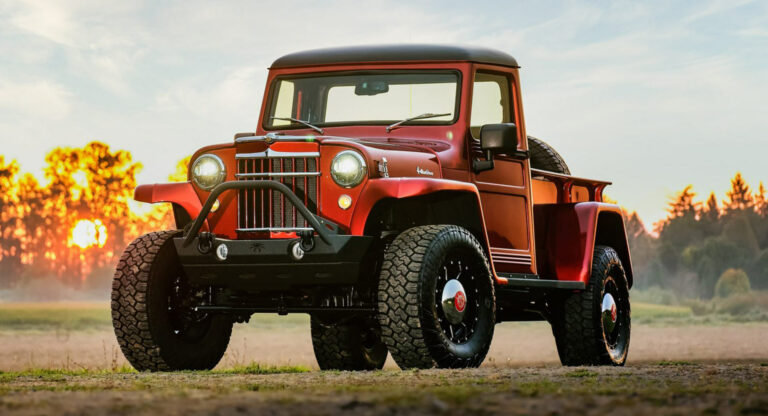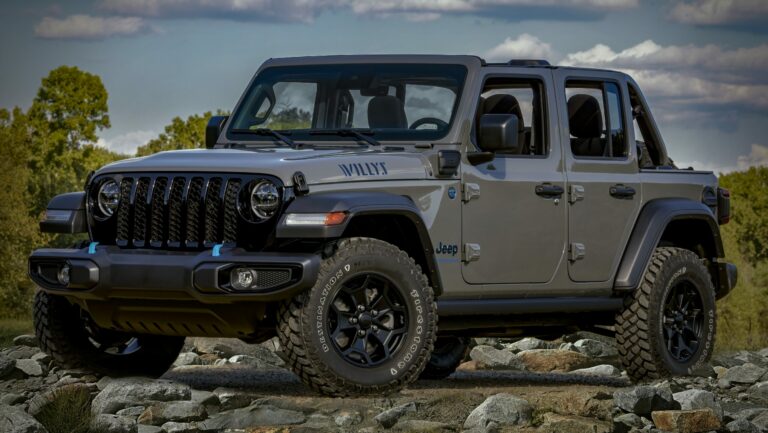Jeep CJ5 Tub For Sale: Your Comprehensive Guide to Restoring a Legend
Jeep CJ5 Tub For Sale: Your Comprehensive Guide to Restoring a Legend jeeps.truckstrend.com
The Jeep CJ5 stands as an enduring icon of American automotive history, a testament to rugged utility and unadulterated adventure. For enthusiasts, restorers, and off-road adventurers, owning or rebuilding a CJ5 is more than just a hobby; it’s a passion. At the heart of any successful CJ5 restoration or custom build lies one crucial component: the body tub. When the original tub succumbs to the ravages of rust, accident damage, or simply years of hard use, finding a "Jeep CJ5 tub for sale" becomes the first and most critical step in bringing these beloved vehicles back to life.
A Jeep CJ5 tub refers to the main body shell of the vehicle, encompassing the floor, firewall, cowl, inner fenders, and usually the rear wheel wells. It is the structural foundation upon which all other components – from the seats and dashboard to the doors and windshield frame – are mounted. Its importance cannot be overstated; a solid tub ensures the vehicle’s structural integrity, provides a secure mounting point for all accessories, and dictates the overall aesthetic appeal of the finished project. Whether you’re embarking on a full frame-off restoration, repairing significant damage, or customizing a unique off-road rig, understanding the nuances of purchasing a CJ5 tub is paramount to a successful outcome.
Jeep CJ5 Tub For Sale: Your Comprehensive Guide to Restoring a Legend
Understanding the Iconic CJ5 Tub
The Jeep CJ5, produced from 1955 to 1983, evolved significantly over its long production run. Initially based on the military M38A1, the CJ5 retained its compact, go-anywhere spirit. Over the years, it saw various engine upgrades, chassis modifications, and stylistic changes. These changes mean that not all CJ5 tubs are identical or interchangeable without modification.
Early CJ5s (1955-1971) featured a narrower track and different body mounts compared to the later "wide-track" models (1972-1983). Dash layouts, firewall configurations (especially for different engine options like the F-head, Dauntless V6, or AMC I6/V8), and even the shape of the fender wells can vary. Knowing your CJ5’s specific year and intended use is crucial before you even begin your search for a replacement tub. A "tub" typically includes the main floor pan, side panels, cowl (where the windshield attaches), firewall, and rear wheel housings. It may or may not include the tailgate, windshield frame, fenders, or grille, so always clarify what’s included in any sale.
Why a Replacement CJ5 Tub is Essential
There are several compelling reasons why an individual might seek out a replacement Jeep CJ5 tub:
- Restoration Projects: This is the most common reason. Decades of exposure to harsh weather, road salt, and off-road abuse often leave original CJ5 tubs riddled with rust. From floor pans and rocker panels to cowl sections and body mounts, rust can compromise the vehicle’s structural integrity and make a simple repair impossible or prohibitively expensive. A new or well-preserved used tub provides a solid foundation for a show-quality restoration.
- Repairing Extensive Accident Damage: While the CJ5 is rugged, accidents do happen. If the original tub has been extensively damaged beyond economical repair, replacing it can be more cost-effective and yield better results than attempting complex bodywork.
- Custom Builds and Hot Rods: For those looking to create a highly customized CJ5, starting with a fresh tub offers a clean slate. This allows for modifications like custom dashboards, integrated roll cages, or specific body alterations without the need to first repair an existing, potentially compromised, structure.
- Preserving Originality (Frame Up): Many enthusiasts want to keep their original frame (often bearing the VIN) but replace a heavily rusted or damaged body. A new tub allows them to achieve a like-new appearance while retaining the vehicle’s original identity.

Types of CJ5 Tubs Available on the Market
When searching for a "Jeep CJ5 tub for sale," you’ll primarily encounter two main categories:

1. Original Used Tubs
- Pros: Authenticity, potentially lower initial cost, retains original patina (if desired). Sometimes, you might find a tub from a dry, rust-free climate.
- Cons: Rust is the biggest concern. Even tubs from seemingly good areas can have hidden rust in "hat channels" (structural supports under the floor), body mounts, or seams. They often come with dents, previous questionable repairs, and wear and tear from decades of use. Finding one in truly excellent, rust-free condition is rare and often commands a premium.
- Where to Find: Online marketplaces (eBay, Craigslist, Facebook Marketplace), specialized Jeep forums, salvage yards, classic car dismantlers, and word-of-mouth within the Jeep community.
- Inspection Tips: Thoroughly inspect every panel, especially the floor pans, rocker panels, cowl, firewall, and all body mounting points. Look for bubbling paint, soft spots, patch panels, and evidence of Bondo. Bring a magnet to detect excessive body filler.

2. New Reproduction Tubs
- Pros: Absolutely no rust, consistent dimensions, often made with thicker gauge steel than original (for steel tubs), typically come with an E-coat primer for corrosion protection. Provides a perfect, straight starting point for any build.
- Cons: Higher initial cost than most used tubs, shipping can be expensive due to size, and while generally good, minor fitment adjustments might occasionally be necessary during installation.
- Materials:
- Steel Reproduction Tubs: These are manufactured to replicate the original steel body. They are robust, authentic in feel, and can be welded for custom modifications or repairs. Brands like Omix-ADA, Crown Automotive, and MD Juan (Philippines-based, known for high-quality reproductions) are popular choices.
- Fiberglass Reproduction Tubs: Made from fiberglass, these tubs are significantly lighter and completely impervious to rust. They are easier to repair small cracks but are less rigid than steel and cannot be welded. They are a good option for those prioritizing weight savings and rust prevention, though some purists prefer the authentic feel of steel.
Key Considerations Before Purchasing
Before you click "buy" or hand over cash, careful consideration is vital:
- Year Compatibility: This is paramount. As discussed, early vs. late CJ5 tubs have different mounting points and features. Ensure the tub you buy is compatible with your frame and other components (e.g., windshield frame, steering column, dash).
- Condition Assessment (for used tubs): If opting for a used tub, demand detailed photos from all angles, including the underside. Ask about the history of the tub, previous repairs, and why it’s being sold. If possible, inspect it in person.
- Material Choice: Steel for authenticity, strength, and weldability; fiberglass for rust immunity and lighter weight. Your project’s goals should dictate this choice.
- Budget: Factor in not just the purchase price of the tub but also shipping costs (which can be substantial for large items), paint, primer, body work, and any associated hardware (body mounts, bolts). New tubs are a significant investment, but they often save money on rust repair down the line.
- Shipping and Logistics: Tubs are large and heavy. They typically require freight shipping, which can be costly and requires specific delivery arrangements (e.g., forklift access at the delivery location or pickup from a freight terminal). Factor this into your budget and timeline.
- Included Components: Clarify what comes with the tub. Is it just the bare shell? Or does it include a tailgate, windshield frame, fenders, or doors? Often, it’s just the shell, and you’ll need to source the other panels separately.
Practical Advice and Actionable Insights
- Research Your Year: Before searching, identify your CJ5’s exact year and model. This will guide your search and prevent compatibility issues.
- Set a Realistic Budget: Don’t just budget for the tub. Add 20-30% for unforeseen costs like shipping damage, minor fitment issues, painting, and miscellaneous hardware.
- Inspect, Inspect, Inspect (for used tubs): If buying a used tub, go in person if possible. If not, request high-resolution photos and videos. Ask for specific shots of common rust areas (body mounts, floor pans, cowl, rocker panels). Don’t be afraid to ask for a video of them tapping suspected areas with a hammer to hear for solid metal vs. crumbling rust.
- Read Reviews (for new tubs): If purchasing a new reproduction tub, look for reviews from other buyers regarding fitment, quality, and customer service from specific manufacturers or vendors.
- Consider a "Rolling Chassis": Sometimes, you might find a complete rolling chassis (frame, axles, suspension, and sometimes engine/transmission) with a good tub attached. This can be a more economical way to acquire a solid tub, plus a host of other usable parts.
- Join Online Communities: Jeep forums (e.g., JeepForum.com, Pirate4x4.com) and Facebook groups dedicated to CJ models are invaluable resources. Members can offer advice, share experiences with different tub manufacturers, and sometimes even have tubs for sale themselves.
- Plan Your Installation: Replacing a tub is a significant undertaking. Have the necessary tools, space, and possibly extra hands available. If you’re not doing the work yourself, factor in labor costs for a reputable shop.
Installation Process Overview
While a detailed guide is beyond this article’s scope, here’s a general overview of replacing a CJ5 tub:
- Preparation: Remove all components from the old tub (seats, dash, wiring, steering column, fuel tank, etc.). Disconnect body mounts.
- Tub Removal: Carefully lift the old tub off the frame. This often requires multiple people or a hoist.
- Frame Inspection & Prep: Inspect the frame thoroughly for rust, cracks, or bends. Repair as needed. Clean and paint the frame for longevity.
- New Tub Mounting: Carefully lower the new tub onto the frame, aligning it with the body mounts. Use new body mount bushings and hardware.
- Alignment: This is critical. Ensure the tub is square on the frame. Test-fit the doors, hood, and windshield frame to ensure proper gaps and alignment before final tightening.
- Reassembly: Reinstall all components, re-run wiring, connect fuel lines and brake lines.
- Finishing: Prepare the tub for paint (sanding, priming). Apply paint, bedliner, or other protective coatings as desired.
Challenges and Solutions
- Finding a Good Used Tub: Solution: Patience and persistence. Expand your search radius and be prepared to travel. Be wary of "too good to be true" deals.
- High Cost of New Tubs/Shipping: Solution: Budget carefully. Consider freight quotes from multiple carriers. Look for group buys or sales from vendors.
- Fitment Issues with Reproduction Tubs: Solution: While generally good, minor adjustments (drilling small holes, minor trimming) might be needed. Be prepared with basic fabrication tools and a "measure twice, cut once" mentality.
- Hidden Rust (Used Tubs): Solution: Thorough inspection (as noted above), and assume some level of repair will be needed. Factor in time and cost for sandblasting and rust remediation.
- VIN Plate Location: The VIN on CJ5s is typically stamped on the frame and sometimes on the firewall or windshield frame. If you’re replacing a tub, ensure your VIN from the original frame or other components is properly transferred or documented according to local laws.
Table: Representative Price Ranges for Jeep CJ5 Tubs For Sale
Please note: Prices are highly variable based on condition, manufacturer, location, and market demand. Shipping costs are additional and can range from $500 to $1500+ within the continental US.
| Item Description | Material | Condition/Features | Estimated Price Range (USD) | Notes |
|---|---|---|---|---|
| Used CJ5 Tub | Steel | Fair (minor rust, dents, needs work) | $500 – $1,500 | Expect significant rust repair, bodywork, and prep for paint. |
| Used CJ5 Tub | Steel | Good (minimal rust, straight, minor bodywork) | $1,500 – $3,500 | Rarer to find. Still inspect thoroughly for hidden issues. |
| New Repro Tub | Steel | Basic (bare E-coat, some holes may need drilling) | $3,500 – $5,000 | Excellent starting point. Requires paint. Check specific year compatibility. |
| New Repro Tub | Steel | Premium (heavy gauge steel, pre-drilled holes) | $5,000 – $7,000+ | High-quality reproduction, often better than original in certain aspects. |
| New Repro Tub | Fiberglass | Bare (no rust, lightweight, durable) | $3,000 – $4,500 | Great for rust prevention and weight savings. Different feel than steel. |
| Used Full Body | Steel | (Tub, fenders, grille, hood, tailgate – fair/good) | $2,500 – $6,000 | Can be a good deal if all components are in usable condition. |
Frequently Asked Questions (FAQ)
Q: Can I put a CJ5 tub on a different Jeep frame (e.g., a CJ7 frame)?
A: Generally, no, not without significant fabrication. CJ5 frames are shorter and have different body mount locations than CJ7 frames. While custom builds are possible, it’s not a direct bolt-on.
Q: Do new reproduction tubs come painted?
A: No, new tubs typically come with an E-coat primer (electrophoretic deposition coating), which is a black or grey protective coating against rust during shipping and storage. They are ready for final bodywork and paint.
Q: What’s typically included when I buy a "bare tub"?
A: A bare tub usually includes the main body shell: floor, side panels, cowl, firewall, and rear wheel wells. It generally does NOT include the tailgate, windshield frame, front fenders, hood, grille, or doors. Always confirm with the seller.
Q: How much does it cost to ship a CJ5 tub?
A: Shipping costs vary widely based on distance, fuel prices, and the carrier. Within the continental US, expect to pay anywhere from $500 to $1500 or more for freight shipping. Local pickup is always the cheapest option if feasible.
Q: Is fiberglass better than steel for a CJ5 tub?
A: "Better" depends on your priorities. Fiberglass is lighter and completely rust-proof, making it great for off-roaders or those in rust-prone climates. Steel offers a more authentic feel, is easier to modify with welding, and some prefer its rigidity. Steel tubs are also generally more expensive.
Q: Where is the VIN on a Jeep CJ5 typically located?
A: The primary VIN is usually stamped on the frame rail (passenger side, near the front wheel) and often on the firewall, and sometimes on the windshield frame. The VIN is on the frame, not the tub itself, so replacing the tub doesn’t affect the vehicle’s legal identity, but check local laws regarding VIN plate transfer.
Q: How long does a tub replacement project take?
A: This depends heavily on your mechanical skill, available tools, and the scope of work. A straightforward tub swap might take a dedicated enthusiast a few weekends, but if you’re also doing frame repair, engine work, or a custom paint job, it can easily stretch into several months.
Conclusion
The search for a "Jeep CJ5 tub for sale" marks the beginning of an exciting journey to revive a classic. Whether you opt for a carefully sourced used tub or invest in a pristine new reproduction, the quality of this core component will dictate the success and longevity of your project. By thoroughly understanding the types of tubs available, diligently assessing their condition, and meticulously planning for the logistics and installation, you can transform a rusted relic into a road-worthy, trail-ready testament to the enduring spirit of the Jeep CJ5. It’s a challenging but ultimately rewarding endeavor that allows you to put your stamp on a piece of automotive history.

